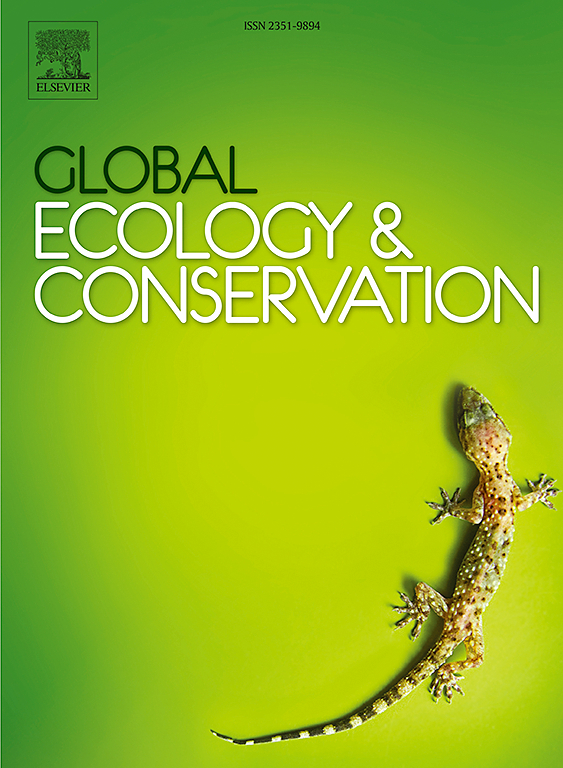Anthropogenic mortality risk of lions depends on a combination of environmental, climatic, and cultural factors within a Sub-Saharan African ecosystem
IF 3.5
2区 环境科学与生态学
Q1 BIODIVERSITY CONSERVATION
引用次数: 0
Abstract
Human-caused mortality is a major cause of decline for large carnivore populations worldwide. Here we use a long-term data compiled from 1980 to 2018 to highlight the possible linkages between conflict-related mortality of lions (Panthera leo) and diverse socioecological factors in the Greater Etosha Landscape (GEL) surrounding Etosha National Park (ENP) in northwestern Namibia. We also use conflict-related mortality records (2001–2018) to model the spatial risk of fatality for lions from anthropogenic mortality, identify the major predictors of mortality, and map potential hotspots of anthropogenic mortality across the GEL. There were 698 conflict related lion mortalities reported between 1980 and 2018 with an average annual mortality of 22 lions (SE 16), although these are likely underestimates as not all anthropogenic mortality may have been reported. Conflict-related anthropogenic mortality of lions peaked during the cold dry season when availability of water was limited and game movements were concentrated around perennial waterpoints, and was greater in areas with localized livestock populations and low woody cover. Our landscape risk analysis revealed that areas bordering ENP function as ecological traps with certain pockets within the GEL acting as hotspots of conflict-related mortality. The majority of the conflict-related lion mortality was reported from commercial freehold farms reflecting Namibia’s colonial history and land ownership. Our findings suggest that mitigation measures to reduce human-lion conflict at the interface of ENP and other protected areas in Sub-Saharan Africa need to consider both ecological and cultural factors to have maximal impact. Given the high conflict-related mortality of lions in the landscape surrounding ENP, a conservation management strategy is critically needed to ensure human-lion coexistence within the GEL.
求助全文
约1分钟内获得全文
求助全文
来源期刊

Global Ecology and Conservation
Agricultural and Biological Sciences-Ecology, Evolution, Behavior and Systematics
CiteScore
8.10
自引率
5.00%
发文量
346
审稿时长
83 days
期刊介绍:
Global Ecology and Conservation is a peer-reviewed, open-access journal covering all sub-disciplines of ecological and conservation science: from theory to practice, from molecules to ecosystems, from regional to global. The fields covered include: organismal, population, community, and ecosystem ecology; physiological, evolutionary, and behavioral ecology; and conservation science.
 求助内容:
求助内容: 应助结果提醒方式:
应助结果提醒方式:


